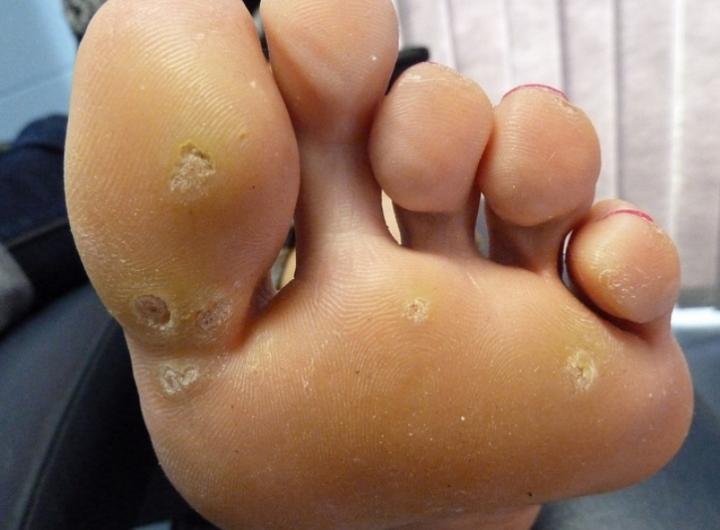admin
Latest posts by admin (see all)
- Wart Cream: Which One to Choose? - October 14, 2019
- Wart Freeze: How Does the Cryodestruction Take Place? - October 11, 2019
- How to Use Salicylic Acid for Warts Removal? - October 8, 2019
Plantar warts in medicine are considered benign skin neoplasms of a viral origin. Moreover, the share of warts localized on the foot accounts for 1/3 of all formations. To establish an accurate diagnosis, differentiate condylomata, papillomas, other growths, exclude the oncological nature of the neoplasms, you should contact the dermatologist. With plantar warts, treatment is best done with the help of modern equipment and technologies, since inadequate removal of the root of skin formation, as well as damage to nearby tissues, provoke the growth of new or daughter outgrowths in other skin areas. It is recommended to learn more about the pecualiriaties and distinctive features of plantar warts not to harm yourself.
Contents
What Are the Causes of Plantar Warts?
Any type of wart appear with a weak immune response to the introduction and reproduction in the body of HPV – the papilloma virus, which has more than 100 different types and the plantar wart isn’t an exception. For convenience, each type of virus has numbers. Plantar warts can be caused by 4, 3, 2, and 1st type of HPV. HPV is easily transmitted from person to person in a contact-household way and according to the statistics, it is believed that the majority of the population is infected with many of its types.
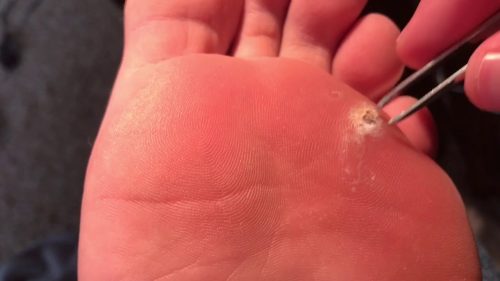
That is, the use of other personal hygiene items, as well as the presence of a moist, warm environment in swimming pools, baths, saunas, gyms contribute to the transfer of the pathogen through infected skin cells from the patient to a healthy person. As the virus dies from sunlight, infection on the beach is excluded. Even with infection, it is not always possible to grow papillomas and warts.
With strong immunity, the virus enters the body, goes into a latent condition and does not cause any harm, but with a malfunction, weakening of the body’s defenses (food poisoning, serious infectious disease, severe stress, overwork, overload, poor nutrition), it is able to activate before the formation of various formations on the skin. To provoking factors of the appearance of tumors on the foot it is possible to refer the folowing:
- Foot injuries,
- feet diseases that disrupt the trophism of tissues – atherosclerosis, diabetes mellitus, lower limb varicose,
- dryness of the skin of the feet or, conversely, excessive sweating,
- diseases, foot deformities – arthritis of the foot joints, flat feet, osteoarthrosis,
- friction and skin pressure from uncomfortable shoes.
How Does the Wart on the Foot Look and How to Distinguish It from Calluses?
On the sole, such warts have a clearly rounded or oval shape, not more than 1-2 cm. Over the main skin, they protrude only 1-2 mm, and the color may not differ from the main mass, in rare cases they can be pink or pale brown. First, the outgrowth has a smooth surface, as it grows, it is covered with layers of epidermis, which becomes rough, keratinized and eventually acquires yellow-gray colors. In some cases, brownish-black dots form on the surface of the tumor, this results from the thrombosis of capillaries that are close to the surface, and a crater-like depression can also be present in the center of the wart. Only with very high activity of the virus, education is of a mass nature, most often these are still individual entities. When the child warts become many, they give the affected foot a mosaic pattern. In some cases, for internal reasons, when immunity wins, the body begins to reject the build-up and it disappears on its own, leaving no trace. But this happens rarely, and often, on the contrary, because of constant trauma, it subsequently brings to the patient a serious discomfort, tenderness in walking, pressure and friction about the shoes.
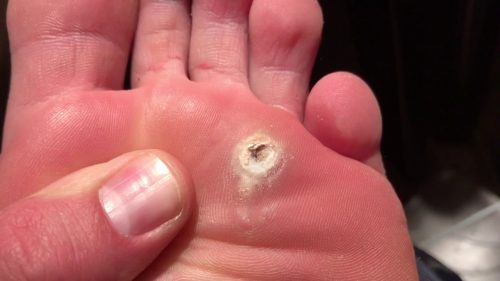
Since the plantar formation due to the constant pressure of the shoe acquires the appearance of calluses, only an experienced dermatologist can distinguish and differentiate the build-up from other formations. This is done with dermatoscopy. For a more thorough examination, a specialist scraped out the cornified layer of education and sends a PCR analysis that excludes or confirms the human papilloma virus. Usually, with a plantar wart on the surface there is no skin pattern and traces of thrombosed capillaries are present. To determine the depth of germination of the root of the tumor, the doctor may prescribe an ultrasound.
Differential diagnosis of warts on the foot is performed with:
- Malignant neoplasms
- Deformative foot diseases
- Wright’s syndrome,
- warts on the foot differentiate with keratoderma.
Plantar warts cause a lot of trouble for a person, especially when walking. In some cases, they represent a significant health hazard, which is expressed in:
- The likelihood of their development into a malignant formation (cancer).
- Sealing tissues located near the built-up edge.
- Nerve compression.
- Acute pain while walking.
- Aching pain all over the foot.
Note: Absence of inflammatory process, flat form, small size, thrombosis of capillaries, distinguishes a wart from keratoderma.
How to Remove the Plantar Wart: Advantages and Disadvantages of Methods
Today, progressive medical technologies offer several very effective ways to get rid of any kind of warts, including plantar warts. In many specialized paid clinics, there are several options for 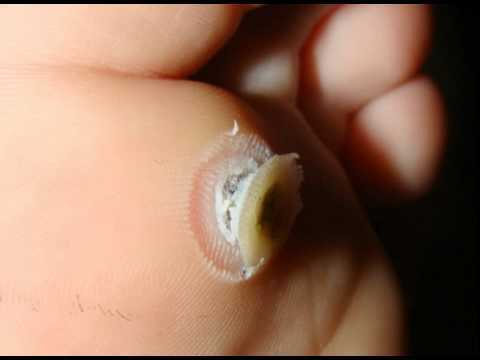 treatment, getting rid of plantar warts in a child and an adult:
treatment, getting rid of plantar warts in a child and an adult:
- Electrocoagulation: Due to the fact that unlike others, the wart on the foot is complicated by the fact that it is due to being on the sole, it grows very deep into the skin, a method such as electrocoagulation is not suitable to remove old, large or very deep plantar warts. The disadvantage of this method is that it is used only with a superficial, fresh, not deeply expanded wart, and there always remains a scar or scar.
- Treatment of plantar warts with liquid nitrogen – cryodestruction: This method is the most widespread and popular. After the procedur, scars don’t remain, but its efficiency directly depends on experience of the doctor. When carrying out cryodestruction, a specialist must accurately calculate the depth of the effect, because with too intense action a scar may remain, and an insufficient, surface effect leads to a relapse, repeated growth of a new wart. The procedure itself is painful enough but it lasts no more than 1 minute, after processing with nitrogen in the area of the growth, a blister appears, which should be protected from water, trauma, and in order to avoid infection, it should be treated with a strong solution of potassium permanganate or salicylic alcohol for about a week until the formation disappears.
- Laser removal of plantar warts: Removing the wart by laser today is also becoming more accessible and popular, this method has the best cosmetic effect. Regulation of the depth of action, in contrast to liquid nitrogen, is controlled in a more optimal way, so this method takes a minimal amount of time, it is of little use, recovery takes less time. Most dermatologists today consider laser removal of any neoplasms the most progressive, safe and fast, the advantage is the absence of relapses, the rapid restoration of tissues and the absence of traces from surgery, and the fact that deleted tissues can be sent for histological examination after the procedure.
- Radio wave method: This procedure is sometimes also used to remove the wart on the sole, it is cut out by a radio-frequency knife with parallel cauterization of blood vessels – this prevents the spread of the virus. getting it into the bloodstream, and also prevents bleeding.
- Surgical removal: This method is now practically not used, in very rare cases, when a large wart size undergoes surgical excision. This method involves the use of local anesthesia and a conventional scalpel, so it is an operation without pain. However, the drawback is a protracted and painful healing process and a scar, a scar, is always formed.
Note: The doctor will recommend you the best plantar wart treatment method taking into account all pros and cons of each of them.
Treatment of Plantar Warts with Natural Homemade Remedies
Of course, most people do not like spending money on expensive procedures. But warts, whatever place they appear in, cannot be ignored, in our time of oncological tension, one should pay attention to any neoplasms on the skin. And the fact that the appearance of growths indicates a failure in immunity should also be considered as a warning that health is not all right.
It is necessary to increase immunity. Self-hypnosis can also be used. There are cases of self-extinction of warts after some positive effects or changes in the body. It has long been known that the human immune system is able to cope with any ailment. However, today’s abundance of negative information, a depressed state, a mass of stresses, the use of chemical products, a wrong lifestyle that is not harmonious with nature, leads to the fact that the body can not cope with the colossal load from all sides.
Increase immunity with the help of physical work in the fresh air, proper nutrition, an active way of life, a positive attitude to everything that is happening around. An important role in the recovery of the body plays self-hypnosis, meditation, Yoga, pronouncing positive moods. Salicylic acid It can be used only for plantar or common warts.
Among the most effective ways to treat plantar warts with the help of homemade remedies are the following:
- Salicylic acid: It can be used only for plantar or common warts. Before applying the acid, it should be soaked in warm water for 10 minutes and dry the skin. Take the liquid with the help of an applicator and cover the entire surface of the formation. You can use preparations of salicylic acid in the form of a sticky dressing leaving it for 2 days. Such procedures are performed before the warts are completely destroyed, sometimes it takes 3 months.
- Natural celandine juice or mountain celandine: It is possible to use self-made extract and celandine juice from warts. This is an ancient natural method of treating plantar warts, which our ancestors used – when treating the warts 3-4 times a day for 3 weeks, most often it disappears. In the absence of such an opportunity, you can try using the ready-made medical agent, which contains the natural juice of this plant, gentian, cocoa and rhododendron.
- Flour with acetic acid: The natural remedy for the removal of plantar warts is to make a gruel made from 70% acetic acid and flour. Apply this mush on the growth and leave for a while. This procedure should be repeated for several times.
- Hyperthermia is a known method of increasing immunity. It is believed that with half-hourly steaming legs, immersing them in hot water, the expansion of the vessels contributes to the improvement of health. This procedure can be done 2-3 times per week.
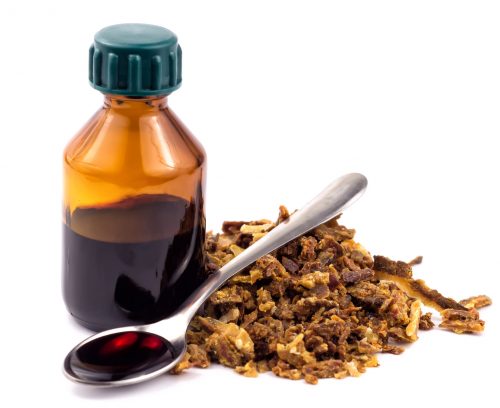
Note: Do not self-medicate and self-diagnose if a plantar wart on the child’s foot appears, treatment with vinegar, celandine and other natural remedies is considered less effective than removing warts using liquid nitrogen or laser.
How Is It Better to Remove Plantar Warts in Children?
The formation of plantar warts can also occur in childhood. Since the skin of the child is more sensitive, the treatment options should be chosen so that they don’t damage epidermis. Dermatologists recommend using the following methods:
- Burnout with a light impulse current (electrocoagulation).
- Destruction of thinned sections of the spot with liquid nitrogen or trichloroacetic acid. The technique is not suitable for everyone and leaves visible traces in the form of scars on the skin.
- Some gels or lotions.
Such therapy is selected taking into account age characteristics, as well as the degree of tissue damage. However, such treatment does not always bring positive dynamics. Photochemotherapy is the method that can also be used in children. This is the removal with the use of special lamps that emit ultraviolet radiation. The technique is practiced for young children and does not cause pain in patients.
Note: An experienced dermatologist will select a course of treatment for patients of young age on the basis of the results of tests and a general assessment of the skin lesion.
